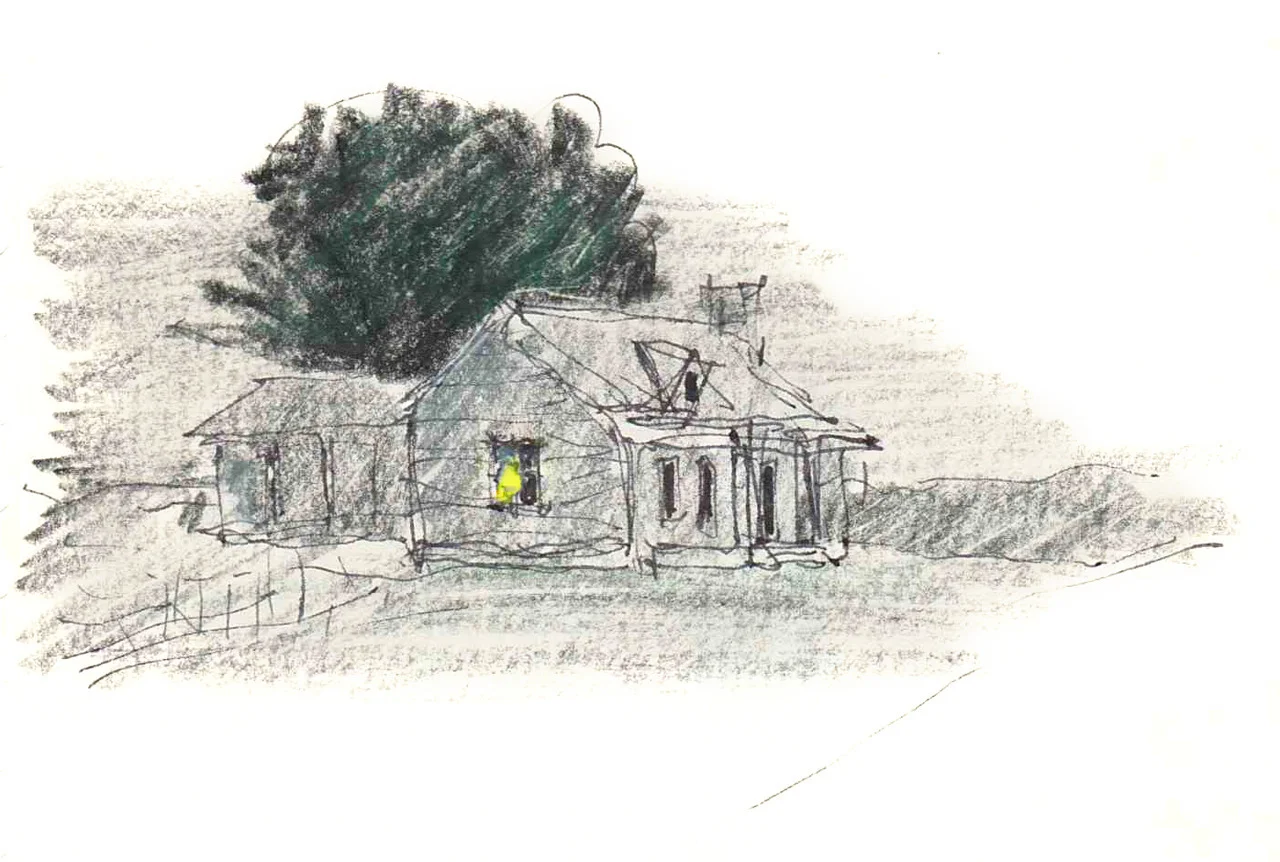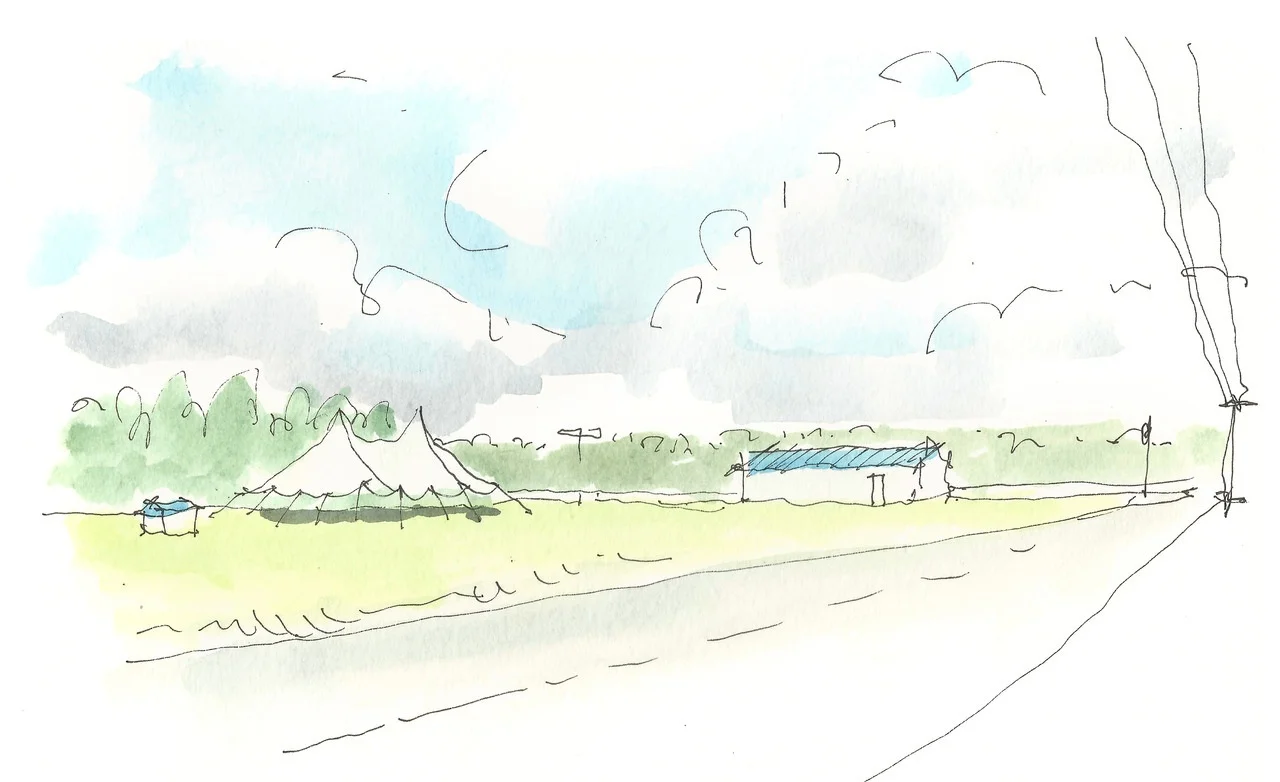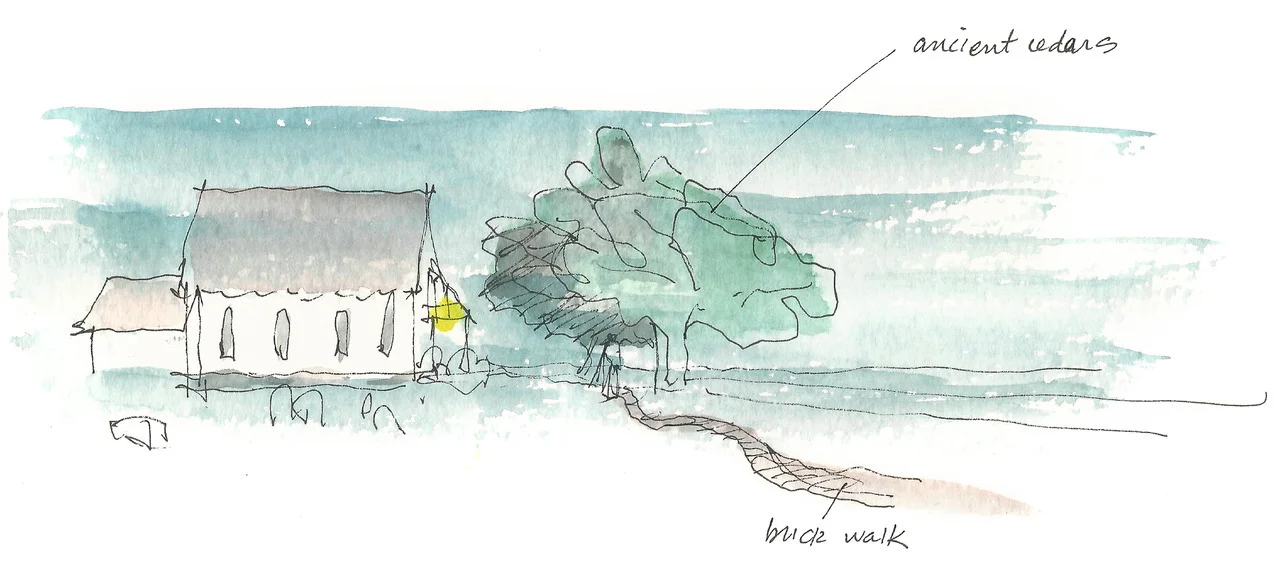Native Places: The Archive
Mrs. Daugherty
Living in the moment
I drove by her house ten miles east of Trenton, North Carolina, every month on my way to the coast. She grew yellow flowers outside the front porch in a little square garden next to a swept yard. Chickens pecked for bugs under the house.
Mrs. Daugherty was sitting on her porch snapping string beans when I stopped to introduce myself. She was comfortable living alone, she said. “I’ve made do without electricity for 38 years, and without a car. I got along plain.” Her son lived in Florida.
I noticed that she restored her clothes. Her dress was darned together like the boards in her chicken house.
That was 30 years ago. Now my memories are of yellow flowers along a roadside, growing dark.
That morning, Mrs. Daugherty gave me a Mason jar of tomatoes she had recently “put up.” Then I left her to be on time for a contractor’s meeting. To me, time was money to be exchanged for clothes and cars. For her, time was life.
Driving home to Raleigh that night, I saw an oil lamp in her window, shining in the dark.
Revival
Who ever had a revelation indoors?
As much as I like the refined glory of architecture, I often find myself drawn to the quieter glory of vernacular buildings, the sort of architecture made by people who didn’t know they were architects. So when I drove past a pasture recently where someone had flung up a homemade tent, I stopped my car. A sign announced, “True Word of Faith Worship Center.”
The history of religion is a history of temples, mosques and cathedrals, almost all designed by architects. But here on Highway 52 in South Carolina, shimmering in the July sun, was a church as elemental as a pulpit in the wilderness.
In the beginning, most religions took to the outdoors. Think of Jesus giving his Sermon on the Mount, Muhammad in a mountain cave, and Buddha’s enlightenment under a Bodhi tree. They were revelations.
Now temples are solid, everlasting, and roofed in. But who has ever had a revelation indoors?
That afternoon in South Carolina, the loudest sound was the buzzing of cicadas. But later that night, gospel songs would shake the pinecones in the trees.
The church in town is where you go to get married. This is the church where you go to get religion.
St George’s Episcopal Church
a good onion
Much as I admire the superstars of architecture wished upon us by social media, I’d like to make a plea for a little ordinariness in building.
Consider this church in Lake Landing, North Carolina, for example. It’s sheltered in the same gable-roofed box shape that once housed ancient Greek temples and now houses tobacco barns. Ordinary. But the little church gains some gravitas from a cemetery, two ancient cedar trees nearby, and the fact that it has weathered winds whistling over Lake Mattamuskeet for over 150 years.
A church like this can creep into your affections in a way that glitz and steel cannot.
After all, buildings can be friends. And the ordinariness of sunlight on a church porch or a breakfast table happens more often than stardom.
Most of the buildings I find memorable were done not for fame but because they seemed the right thing to do. It’s as though their designers were gardeners. A gardener doesn’t need to win an award with his onion to feel good. He knows when he’s got a good onion.


